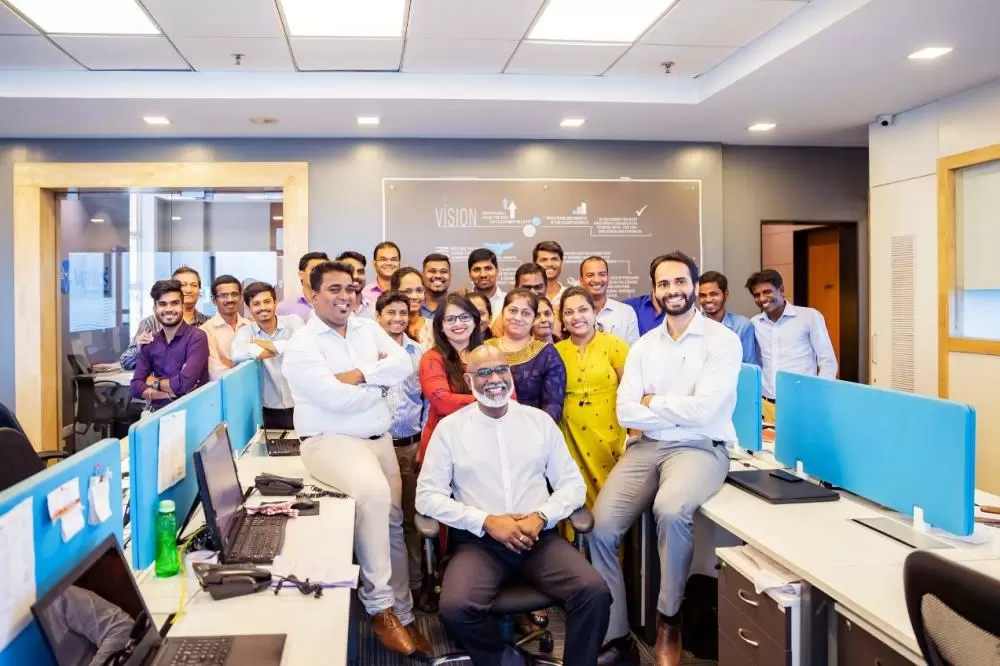From Kodak to the Future: Embracing Change to Avoid the Fate of Companies That Failed to Adapt

Dishan Kamdar
|
02-May-2023
Vol 14 | Issue 18
Embracing change does not come naturally to most people. It is basic human nature to want to maintain the status quo. Being creatures of habit, people are most comfortable with things as they are.
This holds true for those in the most junior positions to the highest echelons. This apart, some leaders are blinkered. They are so caught up in the day-to-day operations of their business that they fail to see the larger picture.

| Some leaders are simply not adequately aware of the ongoing and impending disruptions around them (Photos for representation purpose only / iStock.com/ Deepak Sethi) |
They are simply not adequately aware of the ongoing and impending disruptions around them.
Some leaders are complacent or overconfident or even arrogant. They believe that they have reached their current positions because they are the best and that they will not be impacted adversely by anything.
Companies such as Kodak (photography), BlackBerry (mobile phones), Nokia (mobile phones), AT&T (telecom), Block Buster (video rental chain) and Digital Equipment (computers) are all prime examples of such thinking.
Take Kodak. It was founded in 1884, went on to become a leader in photography and then went bankrupt in 2012. The story goes that the first digital camera was in fact invented by an electrical engineer at Kodak in the 1970s, but the management was not impressed.
They simply failed to see digital as the next big thing in their industry. When the engineer showed them his digital camera, they apparently told him, ‘That’s cute – but don’t tell anyone about it’.
Then there are those who are aware of the need to change but hesitate to make the necessary moves because they want to avoid any resistance from within their organisations.
In fact, one of the biggest dichotomies of the current situation is that even as the need for transformation is higher than ever before, so is the resistance to change. This resistance typically comes from within the organisation and stems primarily from employee insecurity.

| Most leaders do not want to upset their teams and rock the boat by pushing for change (Photo: iStock.com/ GCShutter) |
People are scared that they will lose their jobs. It is not hard to understand why. New and disruptive technologies, new processes, new business models, new products, new services, etc. require new skills, and there is a danger of existing skills and roles becoming redundant.
A study by consulting firm McKinsey estimates that by 2030, between 400 million and 800 million people globally could lose their existing jobs to automation and will need to find new jobs.
The study adds that of those who are displaced by automation, 75 million to 375 million people may need to move to other job categories and learn new skills.
A Harvard Business Review article notes that people often tend to resist artificial intelligence because it disrupts the existing way of working, and they fear they will lose control over their work; it lacks transparency and also comes with a lot of hype.
Given this scenario, if the need for change and the impact of the changes are not communicated properly to the employees, it fuels their fears. Their natural reaction therefore is to resist change and maintain the status quo and thereby try and save their individual jobs.
Most people, including CXOs, are people-pleasers. They do not want to upset their teams and rock the boat by pushing for change. They are afraid that it could damage their relationships with their employees and also with other stakeholders.
Further, numbers too are not encouraging. A McKinsey article notes that typically most change initiatives – as high as 70% – fail because of employee insecurity and lack of support from the management.
In the current environment of heightened employee insecurity, leaders probably fear that the rate of failure could be even higher.

| Fear is a major reason why leaders prefer to maintain the status quo (Photo: iStock.com/ GCShutter) |
Fear is indeed a major reason that leaders prefer to maintain the status quo. Whenever you try something new, there is always the possibility that you may not be able to control the outcomes. This uncertainty carries inherent anxieties. The biggest anxiety comes from fear of failure.
Some leaders even get action paralysis by just thinking about how any potential failure would impact their reputation and standing in their organisation, industry and society.
This fear could also stem from past failures. If a leader’s change initiatives in the past have not borne the expected fruits, the fear of failure gets even more entrenched as severe self-doubt.
An article in Forbes suggests five main reasons why leaders are afraid to embrace change. These include fear of accountability and responsibility, fear of taking risks, lack of an entrepreneurial mindset, inadequate organisational readiness and not having evolved as leaders.
There are other factors too that fuel fear and hold people back from taking big risks and placing bold bets. For instance, they often tend to place invisible boundaries around them that prevent them from moving beyond their comfort zone. Or, they do not trust the data they get.
They are not sure how correct and how reliable it is. They are worried that with things changing so fast, the data they use to initiate any change may get redundant even before they can complete the change.
So, they prefer to play safe and wait. Or, they lack confidence in their core teams to execute the required changes and are also not sure how supportive their board members will be in case the efforts fail.
Some leaders are plain self-centred. Typically, results of any big initiatives come only after three to five years and self-centred people do not want to take all the effort and risks and go through all the pain and not get credit for it. An article in Forbes titled 15 Ways to Identify Bad Leaders notes: ‘Real leaders take the blame and give the credit–not the other way around’.
This article is an excerpt from the latest book by Prof. Dishan Kamdar, Vice-Chancellor of FLAME University, titled "Cleansing Moments: Developing Leadership Skills for All Times."














